Introduction to OpenAI
Introduction to AI
Zero Shot and Few Shot Prompting
In this guide, we explore how to leverage large language models (LLMs) with minimal examples—or none at all—to accomplish tasks ranging from translation to sentiment analysis. You’ll learn best practices, see clear examples, and understand real-world applications of zero-shot and few-shot prompting.
| Prompting Method | Definition | Common Use Cases |
|---|---|---|
| Zero-Shot | Perform tasks without any examples in the prompt | Multilingual translation, summarization, QA |
| Few-Shot | Provide 1–5 examples to illustrate the task to the model | Sentiment analysis, text classification, NER |
Overview
Zero-shot prompting asks the model to complete a task it has never been explicitly shown.
Few-shot prompting supplies a handful of input–output pairs to guide the model’s output.
Key Topics
- Importance of Prompting
- Zero-shot Prompting
- Few-shot Prompting
- Prompt Execution
- Benefits and Challenges
- Real-world Impact
Importance of Prompting
Selecting the right prompting strategy can significantly affect accuracy, resource usage, and development speed.
Zero-Shot Prompting
With zero-shot prompting, the model relies entirely on its pretraining to generalize to new tasks. This reduces the need for labeled data and shortens development cycles.
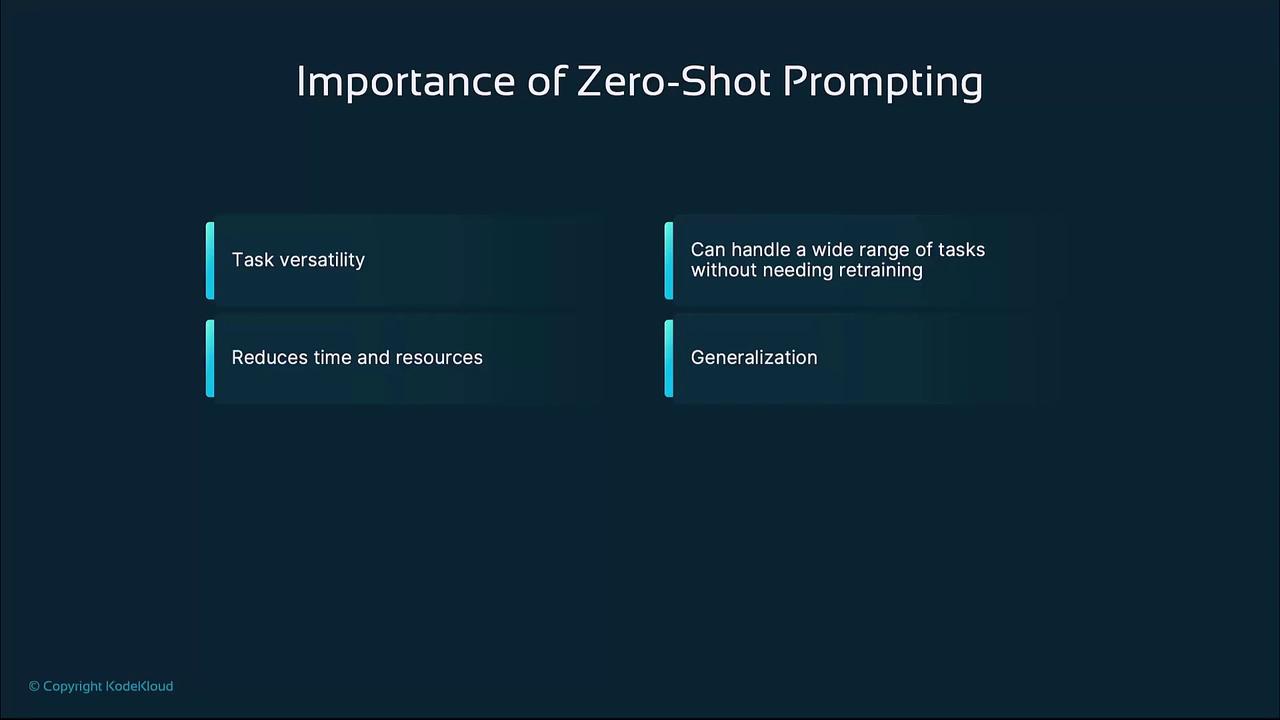
Few-Shot Prompting
Few-shot prompting refines model behavior by demonstrating the task with a small set of examples. This often yields higher accuracy on specialized or nuanced tasks.
Note
Well-chosen examples should be representative and balanced to minimize bias and improve consistency.
Zero-Shot Prompting Explained
In a zero-shot scenario, you supply only a description of the desired task. The LLM uses its vast pretrained knowledge to perform the task directly.
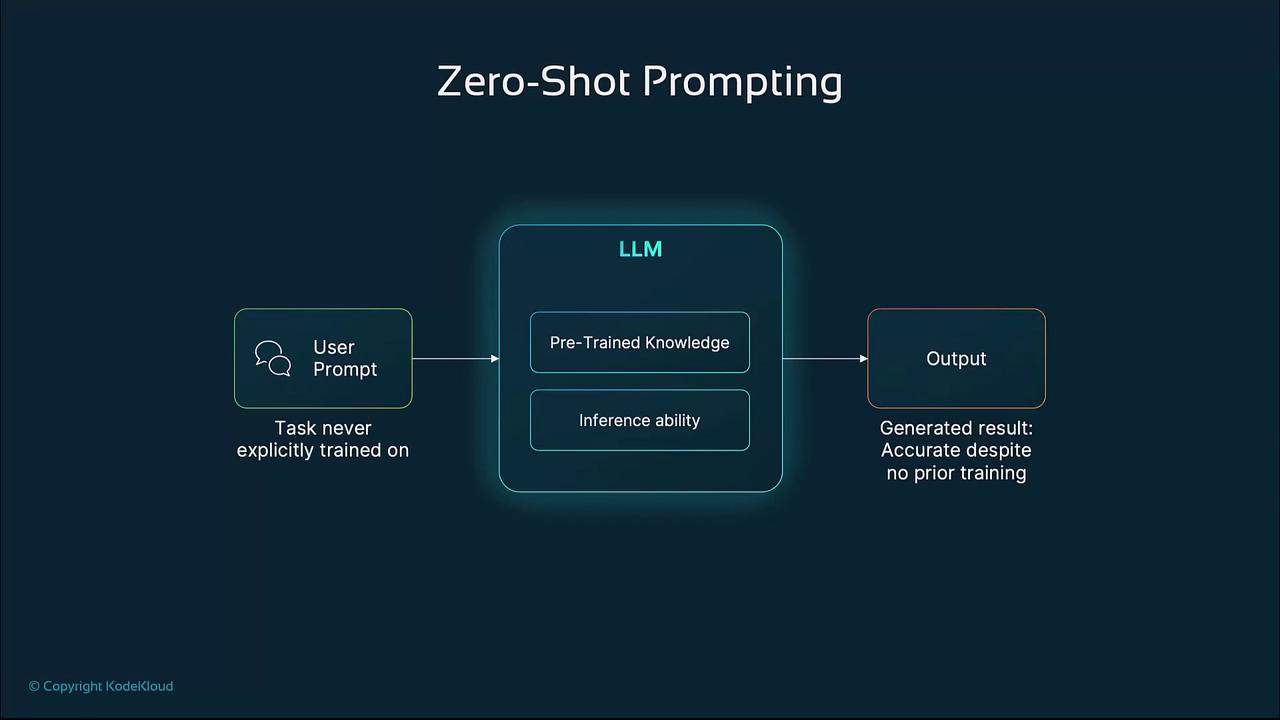
Workflow:
- User submits a descriptive prompt.
- The LLM applies its pretraining and inference capabilities.
- The model generates an output based on general knowledge.
Example: Translate to French without examples
Translate the following sentence into French:
"The cat is on the roof."
Possible response:
Le chat est sur le toit.
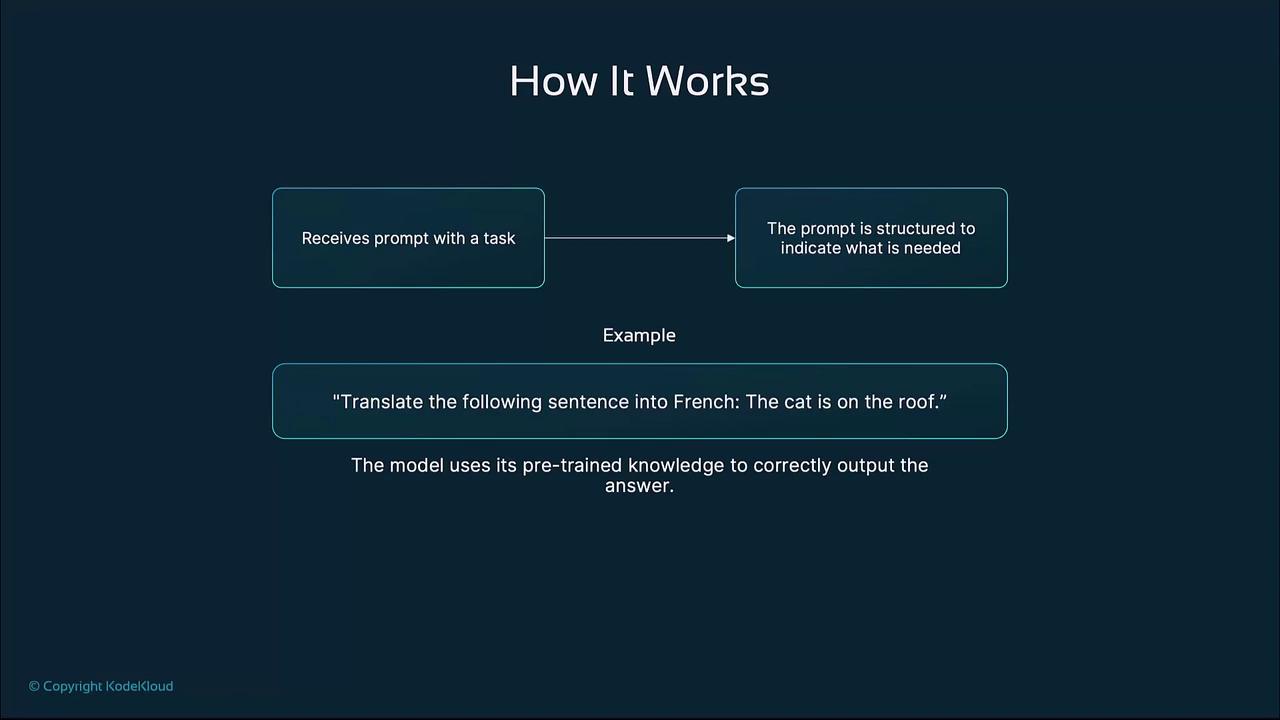
Few-Shot Prompting Explained
Few-shot prompting incorporates a handful of input–output pairs to illustrate the pattern. The model then applies the same pattern to a new instance.
How to structure a few-shot prompt:
- Include 1–5 example input–output pairs.
- Clearly separate each example.
- Provide a final “New Input” for the model to complete.
Example: Sentiment Classification
Input: "The movie is amazing. I loved it."
Output: Positive
Input: "The food was terrible and the service was slow."
Output: Negative
New Input: "The atmosphere was great, but the food was disappointing."
Output:
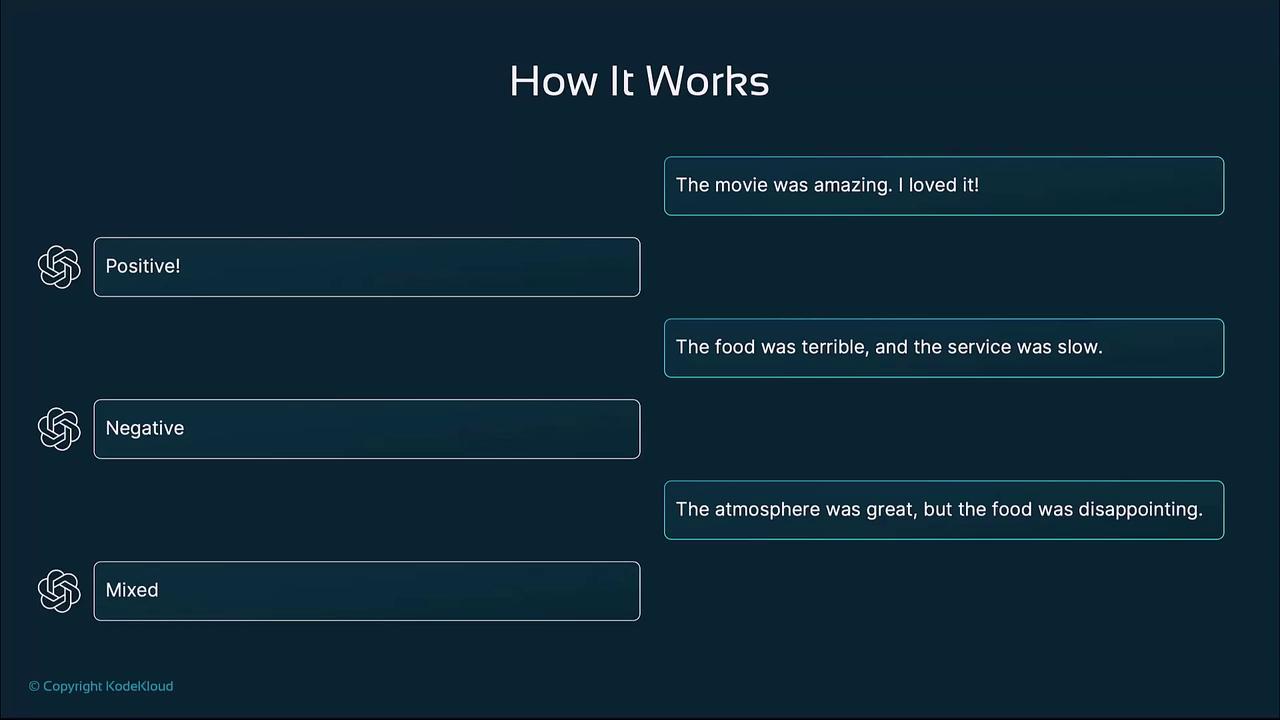
Prompting in Practice
Whether you choose zero-shot or few-shot, prompting unlocks powerful AI capabilities across domains.
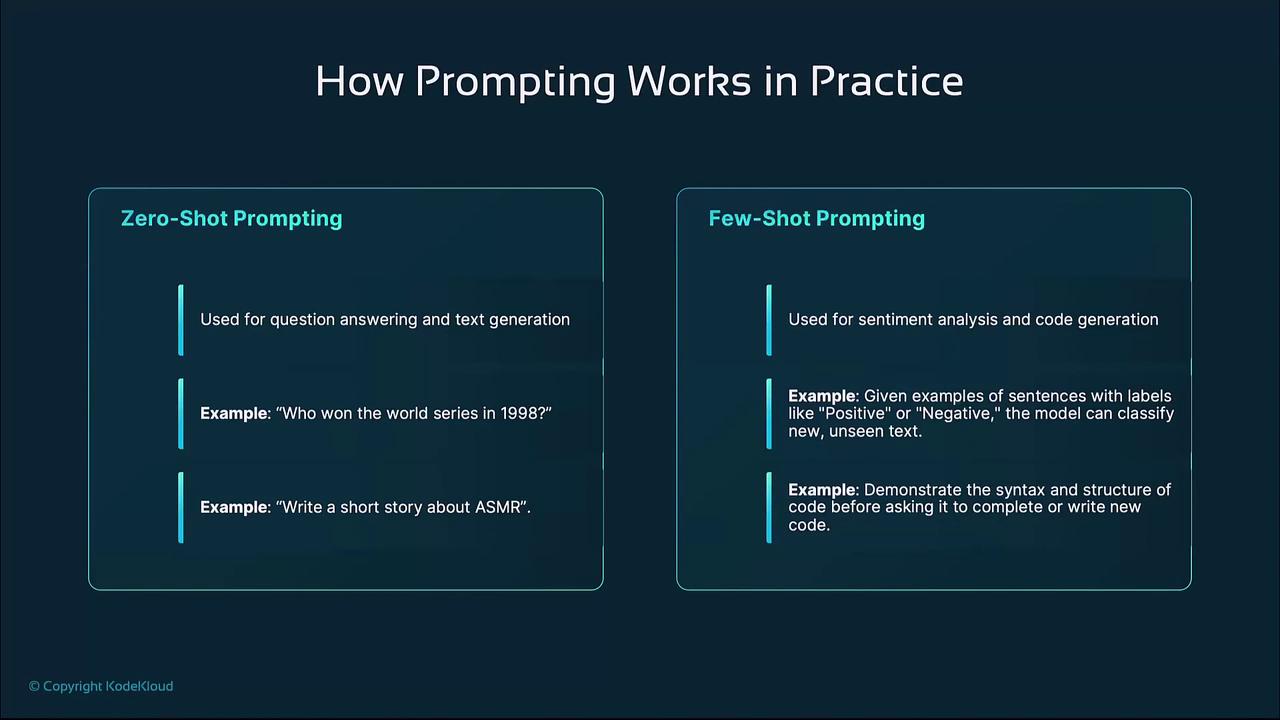
Zero-Shot Applications
- Question answering (e.g., “Who won the World Series in 1998?”)
- Creative text generation (short stories, poetry)
Few-Shot Applications
- Sentiment analysis with labeled examples
- Code generation using sample snippets
Benefits and Challenges
Benefits
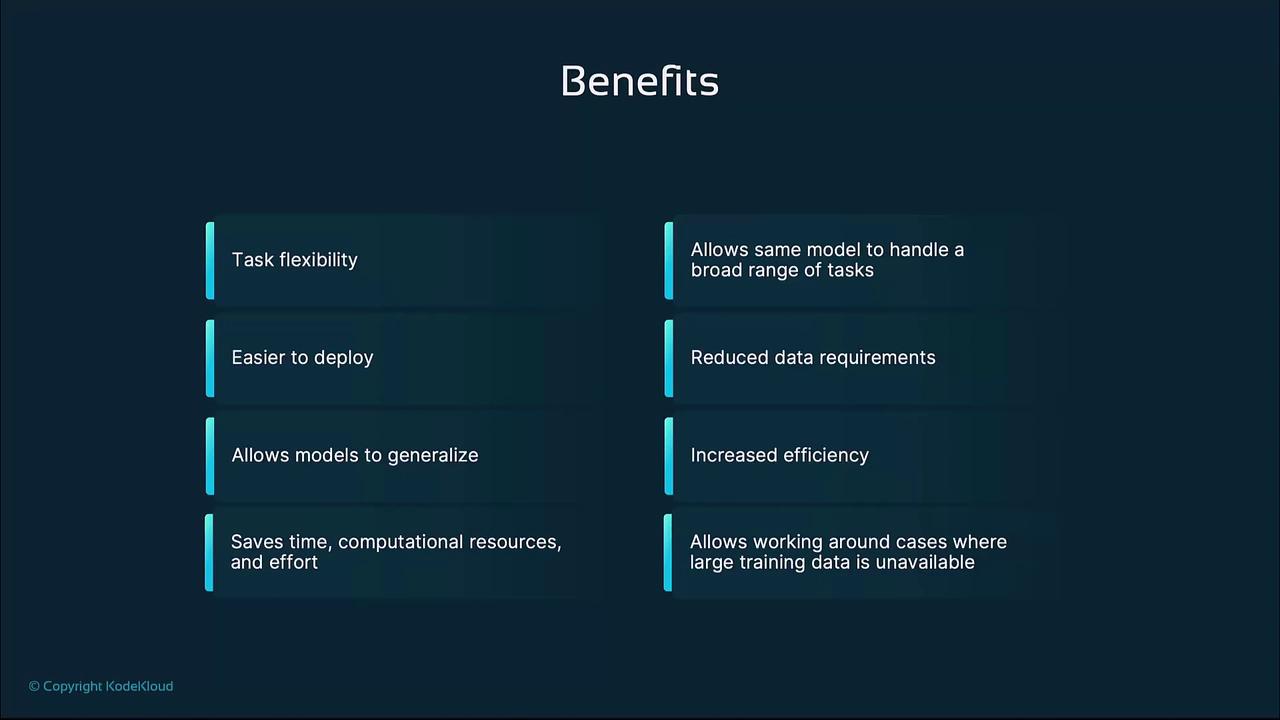
- Task flexibility: One model supports many tasks.
- Reduced data needs: No large labeled datasets required.
- Faster deployment: Skip time-consuming retraining.
- Broader use cases: AI where data is scarce.
Challenges
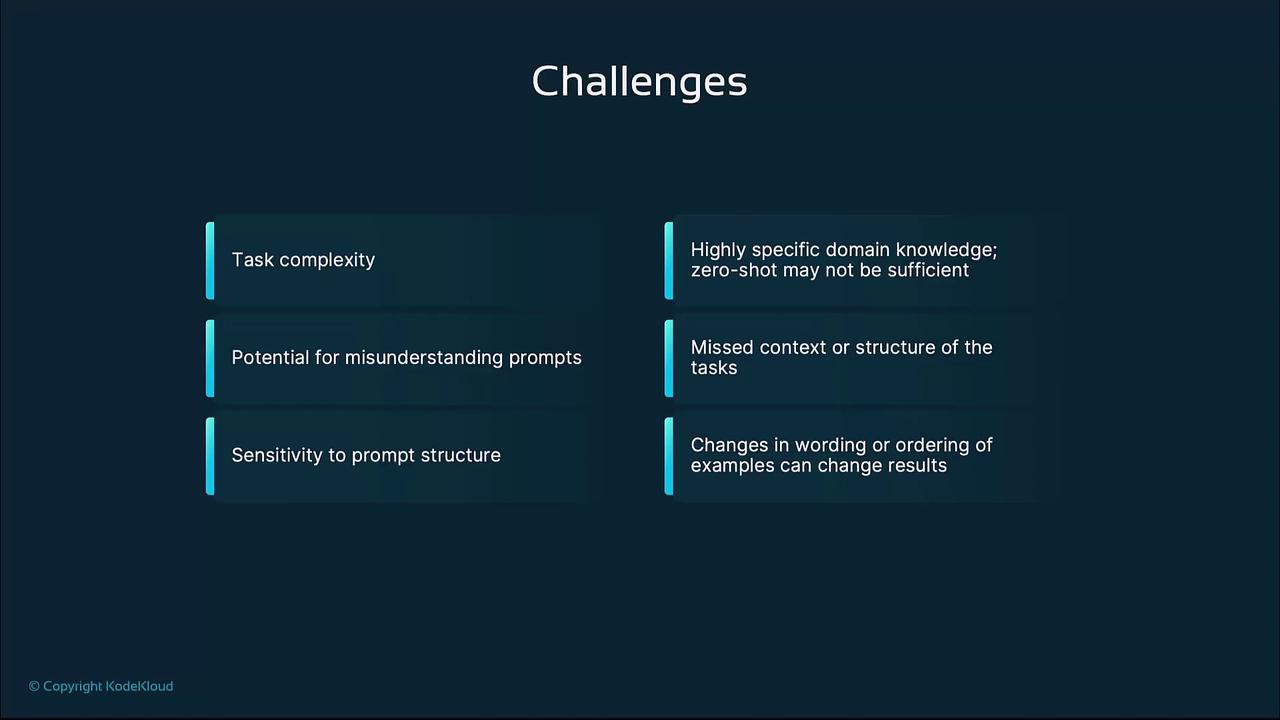
- Complex tasks: May falter on highly technical domains.
- Prompt ambiguity: Vague instructions can mislead the model.
- Sensitivity: Minor wording changes yield different outputs.
- Domain specificity: Few-shot requires relevant, high-quality examples.
Warning
Unclear or poorly structured prompts can significantly degrade performance—iterate on your phrasing to get consistent results.
Real-World Impact
Explore how zero-shot and few-shot prompting empower modern AI solutions:
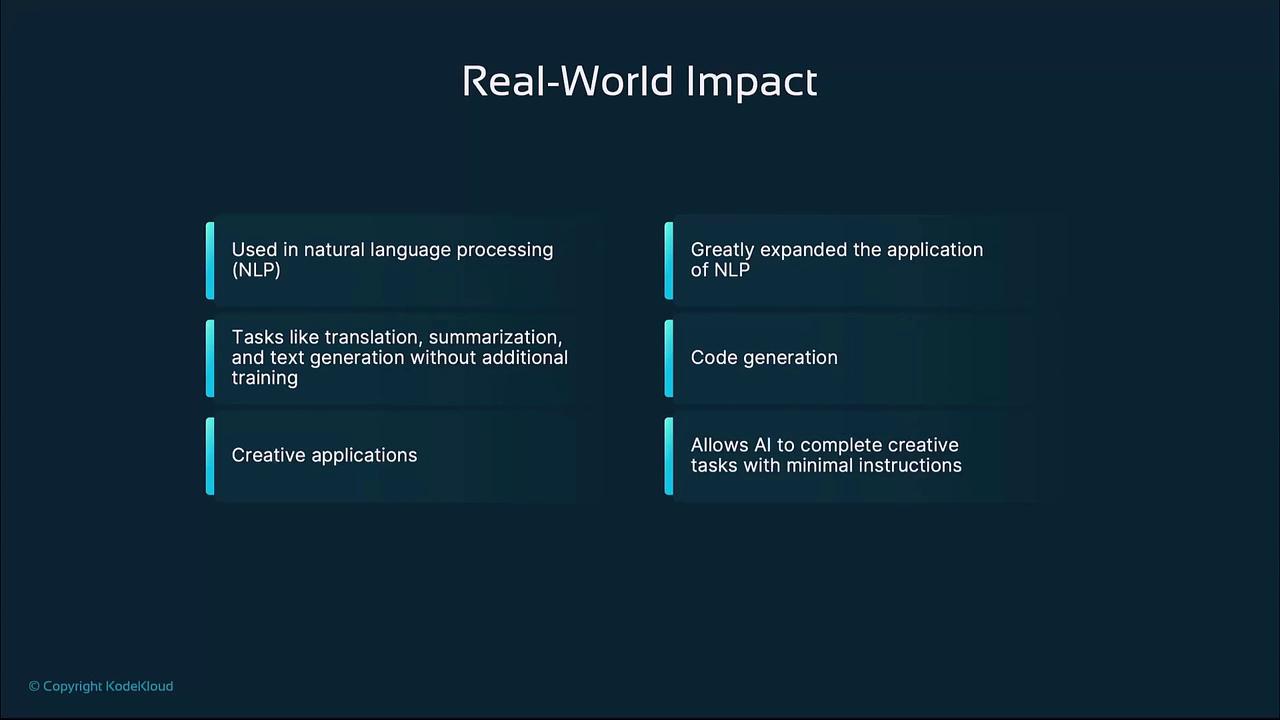
- Natural Language Processing: On-the-fly translation, summarization, question answering.
- Code Generation: Write and refactor code in multiple languages with minimal examples.
- Creative AI: Compose music, draft stories, generate design concepts with brief prompts.
Links and References
- OpenAI Prompt Engineering Guide
- Automatic Summarization (Wikipedia)
- Sentiment Analysis Overview
- Large Language Models (LLM) Fundamentals
Watch Video
Watch video content